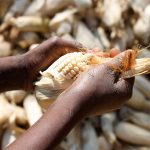
Also refer to the “Renewable and alternative energy” page.
Introduction
The 2022-2031 BFAP Agricultural Outlook looked at the effect of steep input costs on farmer profitability: electricity, for example, had risen by 25% over the previus two years.
Energy is indispensable to the modern economy. Without it, all plans for growth and prospects for jobs come to nothing. An unreliable nature of electricity supply is one cause for lacklustre growth in any economy, and has seen nationwide alarm since 2019, and especially in 2023. (Refer to the last heading on this page for updates from the media).
There are many applications in the agricultural value chain which require a constant, uninterrupted flow of electricity (under the next heading several of these are set out). A disruption of power at an operation like an abattoir is not only inconvenient but can lead to much suffering.
Not only the availability of power but the pricing is important. Year-on-year double digit price increases over the past years have squeezed margins and the threatened the competitiveness of the agricultural sector. Agriculture has called on government and ESKOM to change its mindset about energy.
Two positives from the energy challenge are the resulting integration with neighbouring states that arise out of energy corridors, and the attention that is being given to renewables. Increasing the supply from private co-generation would be an effective way to alleviate the constraints. The Independent Power Producer Programme attracted billions of rand investment, but the country’s progress with this option has thus far been frustrating.
Contents
Energy-smart farming
As a farmer you are a businessman, someone who is just as concerned about keeping operational costs under control as you are about your fields, crops and cattle.
As a farmer, you also know that energy costs are rising and adding significantly to operating costs. Controlling these costs means becoming more aware of energy and the ways you can use electricity more effectively without compromising your farm’s productivity.
By making small changes to the way you use power, you can ensure that you get the best value for your “energy rand” and also play a part in reducing the demand for power – especially in peak periods when the possibility of load shedding is always present.
You can make a start on effective power saving by looking at your operation and assessing the equipment you use and the tasks you use it for.
Getting optimum performance from dryers
If you use dryers on your farm, remember that they can be shut down during the drying process, or can even be switched off completely. Alternatively, heating elements can be switched off and only the fans left running. Fans can be switched off for short periods without causing damage to produce such as grains, oil seeds and lucerne in the dryer. Only use the heating elements in the case of emergencies, for example during continuously rainy days and at night during the off-peak hours. When using heat, it is essential to recirculate the heated air to the inlet of the fan as this will save energy and costs.
When heating elements are used, it is advisable to insulate the ducting to minimise heat loss through the sides. It is vital that there should be no leaks in the ducting.
Irrigation
Making it less costly means that you should match the pipe and nozzle sizes. You should also remember that pipes with a small diameter operate at higher friction levels. More electricity is therefore needed to increase the rate of water delivery and overcome the friction.
The nozzle sizes of sprayers should be checked on a regular basis. If you reduce the wear and tear, you reduce water losses due to leaking pipes. Leaking pipes mean that pumps have to deliver more water and this increases the electricity consumption. By carrying out regular maintenance, you benefit from reduced power costs and water savings.
Using cellphone and computer technology could result in major savings. It’s a fact that if you use these methods to schedule irrigation, you can save up to 30% of the energy you generally use. Making sure that water is pumped to storage dams above irrigated areas means that you can use gravity flow, even when power is not available.
Electric motors
Electric motors consume vast amounts of power. The older your motors are, the higher the chances are that they use more electricity than they should. You can reduce your bills significantly by replacing these motors with new generation “high efficiency” electric motors (Eff 1). Make sure that the motors you install can run at 3/4 of their capacity to perform everyday jobs. Running at full load for long periods requires much more power.
Dairy parlours
Saving power in the dairy parlour means rinsing the milking machines with cold water directly after milking. A complete washing cycle should take place outside Eskom’s peak hours.
Ice bank cool tanks can be used to build the ice bank during off-peak hours to pre-cool and cool milk during Eskom’s peak hours.
Coldrooms
You save electricity by keeping the doors to cold rooms properly sealed. Opening doors only when required cuts down on cold air being “leaked” into neighbouring areas. You should always also remember that overfilled coldrooms actually have a lower cooling efficiency. Air does not flow as easily between and under produce in overfilled rooms. This means that it takes longer to cool down your produce and that more electricity is needed to reach the storage temperature.
Condensers should be well ventilated to deliver the best performance. For greatest effectiveness, compressor rooms and condensers should be installed on the southern side of a building, where they are not affected by direct sunlight. You should check filters and coils regularly and see that they are always clean, and also make sure that there is enough gas in the air conditioning plant. The proper use of air curtains will also reduce the loss of conditioned air.
Coldrooms are major users of electricity. If you take several simple steps, however, cold losses can be minimised and you will benefit from lower electricity costs.
Reducing the energy needs of animal housing
Reducing the cost of animal housing begins with the building itself. Proper roof insulation ensures a cool environment throughout the year and means that less money has to be spent on additional energy to regulate temperatures. Painting a roof silver will also reflect more heat off the structure.
When using natural ventilation for animal housing, buildings should not be wider than 12 metres for optimum utilisation of wind cooling.
If you are building animal housing, remember that the long walls of the building should face north and south and the short walls should face west and east. This will help to dispel the heat that builds up inside buildings during the day.
Increasing the energy efficiency of animal feed processing plants
Animal feed processing plants usually have large numbers of electric motors. By installing a capacitor bank you can generally improve the electrical efficiency of a plant. A plant can be managed so that cleaning and operations requiring low electricity can be done during peak hours, and scheduling the actual operations outside Eskom’s peak hours.
Insulation of greenhouses
When you build greenhouses, bear in mind that a double-insulated plastic cover retains more heat and warmth in greenhouses. Keeping air and soil temperatures constant through insulation means that less energy has to be used to create warmth in the greenhouse environment.
Broiler houses
Improving insulation and optimising ventilation systems in broiler houses are crucial for curbing energy costs, particularly in winter.
Farming using alternative energy sources
As a farmer you can take steps to utilise the waste generated through normal farming operations to create energy. Harnessing the power of the sun can also save energy costs – over the years, these can add up to considerable savings and transform the way you do business.
Where considerable amounts of animal waste are present, you could investigate the possibility of using biogas installations to generate heat and electricity. These installations take the heat generated by animal waste and enable it to be piped into feedlots and piggeries for use as heating, or used for the production of cheap electricity.
Generating power
If you wish to generate emergency power for short periods, consider purchasing a standby generator. Running off petrol or diesel, these generators are custom-made for various outputs. You should consider the amount of energy you will need and seek advice from an expert when considering an installation. Keep in mind that generators should only be used in well-ventilated spaces (be careful of the carbon monoxide build-up!) and should be far enough away from buildings so that their noise does not disturb people or animals.
Energy from the sun, wind and water
There are a number of options available to utilise solar power. You should investigate which of the various options available would suit you best. Solar panels can be used to supply electricity for pumping, charging batteries for lights and any other low wattage use. However, they can be expensive, have a lifespan of approximately ten years and are vulnerable to hail and theft. They also need to be cleaned regularly as dust can reduce their efficiency.
Effective water heating can be provided through a network of black polythene and copper piping through which water is pumped. This can be installed on a roof and used to heat water for the house and/or swimming-pool.
Wind energy can be used to charge batteries that can supply power to low wattage equipment in households. Where water flows constantly from a high point, the water flow can be used to generate electricity.
Using dual fuel systems for efficiency
Dual fuel systems are generally used for heating air or water in a heating system. They are frequently used for drying and intensive animal-housing operations.
The working principle is based on using heating elements during Eskom’s off-peak hours and alternative fuel during Eskom’s peak hours. Alternative fuel options are coal, gas, diesel, oil, paraffin, wood, stalks or any other medium that is readily available in the area.
The bottom line for energy efficiency is that we all bear the responsibility of doing what we can to save power. As a farmer, you have a significant role to play. You will also benefit by making your operations more cost-effective and energy-efficient – saving money while you help our country.
Source: ESKOM
Role players
Further reference:
Associations, pressure groups & NGOs
- Agri Eastern Cape , Kwanalu and other farmer unions are necessarily in the frontline against fracking (see “Organised agriculture” page)
Regulatory and government
Relevant documents are the Integrated Resource Plan (IRP2019), National Development Plan (NDP), the Energy White Paper, and the Transmission Development Plan 2022-2031 (TDP2022). The TDP2022 is a “a living document” – to the country’s energy developments, particularly the Integrated Resource Plan of 2019 (IRP 2019).
- Central Energy Fund – CEF Group of Companies www.cefgroup.co.za
- Department of Mineral Resources and Energy (DMRE) www.energy.gov.za The website provides overviews of the country’s energy strategy and energy sources (petroleum, natural gas, coal, renewable fuels, nuclear), legislation and programmes. Read about the Integrated Energy Plan and Integrated Resource Plan (IRP) on the website.
- Department of Public Enterprises (DPE) www.dpe.gov.za Eskom is one of the enterprises for which the DPE is responsible
- Department of Trade, Industry and Competition (the dtic) www.thedti.gov.za Supports industry in changing energy use patters to be more efficient and sustainable.
- Eskom www.eskom.co.za The website provides contact details for Eskom power stations and visitor centres. Eskom has an Energy Advisory Service for farmers to help you cut costs. Services offered include: total energy analysis to identify areas of waste; recommendations on process and technology improvements; assessment studies to determine current and future energy needs; advice on the most appropriate energy source; and tariff information on the most efficient and cost-effective electro-technologies. Eskom’s Just Energy Transition (JET) Office was established in 2021 “to progress the evolution for transition towards a cleaner and greener energy future”. Visit www.eskom.co.za.
- Independent Power Producers Office www.ipp-projects.co.za
- The National Cleaner Production Centre (NCPC) is a dtic programme to “contribute to building the manufacturing industry’s competitive capability in pursuit of a low carbon economy in South Africa”. See www.industrialefficiency.co.za
- National Energy Regulator of South Africa (NERSA) www.nersa.org.za
- Presidential Climate transition: towards a just transtion www.climatecommission.org.za/just-transition-framework
- South African National Energy Development Institute (Sanedi) www.sanedi.org.za Sanedi runs state-backed programmes like SAGEN (South African-German Energy Programme) and Working for Energy.
Further reference:
- Bloomberg. 2023, December 11. “Cabinet approves South Africa’s revamped energy plan”. MyBroadBand. Available at https://mybroadband.co.za/news/energy/519307-cabinet-approves-south-africas-revamped-energy-plan.html
- Reporter. 2023, September 2. “Independent Power Producers programme reaping rewards”. SA News. Available at www.sanews.gov.za/south-africa/independent-power-producers-programme-reaping-rewards
- Sabinet. 2023, February 2. “Energy Action Plan under the spotlight”. Go Legal. Available at www.golegal.co.za/energy-action-plan
- Reporter. 2023, January 29. “Government takes urgent steps to implement Energy Action Plan”. SA News. Available at www.sanews.gov.za/south-africa/government-takes-urgent-steps-implement-energy-action-plan
- Bloomberg. 2023, January 17. “Ramaphosa’s emergency plan to end load shedding – including new laws”. Businesstech. Available at https://businesstech.co.za/news/energy/656807/ramaphosas-emergency-plan-to-end-load-shedding-including-new-laws/
- Find Eskom’s Transmission Development Plan 2022-2031 (TDP2022) at www.eskom.co.za/wp-content/uploads/2022/02/TransmissionDevelopmentPlan2022-2031.pdf
International business environment
The seventh of the Sustainable Development Goals (SDGs) is “Ensure access to affordable, reliable, sustainable and modern energy for all”. See https://sustainabledevelopment.un.org/sdg7. The Energy Progress Report can be read at https://trackingsdg7.esmap.org.
Some international role players
- www.afdb.org – the African Development Bank (AFDB) has approved the funding of numerous projects in South Africa.
- African Energy Commission – https://au-afrec.org/en
- Africa Energy Indaba https://energyindaba.co.za
- Find the latest World Energy Outlook report at www.eia.gov, website of the US Energy Information Administration (EIA).
- Electric Power Research Institute (EPRI) www.epri.com
- Energy Watch Group – www.energywatchgroup.org
- European Nuclear Education Network (ENEN) – www.enen.eu
- International Atomic Energy Agency – www.iaea.org
- International Energy Agency – www.iea.org
- International Institute for Energy Conservation (IIEC) – www.iiec.org
- New Development Bank (the BRICS initiative) invests in energy www.ndb.int
- World Energy Council – www.worldenergy.org
- World Nuclear Association – http://world-nuclear.org
Some role players in the provision of electricity in Sub-Saharan Africa:
- Botswana Power Cooperation (BPC) – www.bpc.bw
- Copperbelt Energy Corporation and Zambia Electricity Supply Corporation (ZESCO) – www.zesco.co.zm
- Empresa Nacional de Electricidade (Angola) www.minea.gv.ao/index.php/ende
- Electricidade de Mozambique – https://portal.edm.co.mz
- Electricity Company of Ghana – www.ecg.com.gh
- Electricity Supply Corporation of Malawi (ESCOM) – www.escom.mw
- Empresa Nacional de Electricidade (Angola)
- Eswatini Electricity Company – www.eec.co.sz
- Eskom (South Africa) – www.eskom.co.za
- Ethiopian Electric Power Corporation – www.eep.com.et/en/
- Kenya Electricity Generating Company (KenGen) – www.kengen.co.ke
- Kenya Power – www.kplc.co.ke
- NamPower (Namibia) – www.nampower.com.na
- Societe National d’Electricite (Democratic Republic of Congo) – https://snel.cd
- Tanzania Electric Supply Company Limited – www.tanesco.co.tz
- Uganda Electricity Generation Company – www.uegcl.com
- Zimbabwe Electricity Supply Authority (ZESA) is one of the companies supplying electricity. See the government department Ministry of Energy and Power Development website at www.energy.gov.zw.
Read about energy supply in the SADC region at www.sadc.int.
Websites and publications
- Visit the websites listed earlier on this page.
- Watch the Nation in Conversation video (2023, May 17) “The Energy Crisis: Finding the power to change” at www.nationinconversation.co.za.
- Find the energy articles at www.weforum.org/platforms/shaping-the-future-of-energy/articles
- www.esi-africa.com – the “online power journal of Africa”
- Find “The essential guide”, Environmental Commodities: What Are They & How Can You Trade Them? (updated 2022, April) at https://commodity.com/environmental/.
- Subscribe to Creamer Media’s newsletters at www.engineeringnews.co.za.
- The Energy Bulletin, https://energybulletin.org
- Find the articles in the Journal of Energy in Southern Africa, https://journals.assaf.org.za/jesa
- Read publications by the International Energy Agency (IEA) at www.iea.org.
- Find the chapter on energy in the Government Communication and Information System (GCIS) Yearbook at www.gcis.gov.za.
- Find documents on the Department of Forestry, Fisheries and the Environment website, www.dffe.gov.za, like the Sustainability of Decentralised Renewable Energy Systems report and Facilitation of large-scale uptake of alternative transport fuels in South Africa – the case for Biogas.
- The “Energy technologies” option at www.eskom.co.za (take the “about Eskom” and “about electricity” options) provides overviews of biomass power, coal power, conventional hydro power, nuclear power, pumped storage, solar power, wave power and wind power.
- Energy and Capital – www.energyandcapital.com – “Practical Investment Analysis in the New Energy Economy”
- Energy Central, thinkers on energy and climate, https://energycentral.com/c/ecn
- Watch the movies Gasland and Gasland Part II which explore the potential long-term environmental impact of hydraulic fracturing, including poisonous water and earthquakes.
Some articles
- Find the blogs “South Africa’s Just Transition Energy Framework: Transforming Agribusiness Sustainably” and “Agriculture has the solution to load shedding within a year”.
- Newswire. 2023, September 15. “SA imported an entire Eskom power station’s worth of solar panels – in just 6 months “. Polity. Available at www.polity.org.za/article/sa-imported-an-entire-eskom-power-stations-worth-of-solar-panels—in-just-6-months-2023-09-15
- Msiza T. 2023, September 1. “Agro Energy Fund: A Milestone for Agricultural Resilience”. Agbiz. Available at www.agbiz.co.za/document/open/agro-energy-fund-launch-323
- Winkler H. 2023, June 7. “South Africa’s power crisis will continue until 2025 – and blackouts will take 5 years to phase out “. The Conversation. Available at https://theconversation.com/south-africas-power-crisis-will-continue-until-2025-and-blackouts-will-take-5-years-to-phase-out-206343
Majola G. 2023, May 30. “Progress in agriculture master plan lags as load shedding takes centre stage – Agbiz”. IOL. Available at www.iol.co.za/business-report/economy/progress-in-agriculture-master-plan-lags-as-load-shedding-takes-centre-stage-agbiz-b41d6451-59f9-4fad-882d-4be7fb51d417 - Arnoldi M. 2023, February 3. “Farmers seek new deal as loadshedding threatens industry and food security”. Engineering News. Available at www.engineeringnews.co.za/article/farmers-seek-new-deal-as-loadshedding-threatens-industry-and-food-security-2023-02-03-1
- Staff Reporter. 2023, January 23. “How to fight the effects of rolling blackouts and rising energy costs”. Farmer’s Weekly. Available at www.farmersweekly.co.za/agri-business/agribusinesses/how-to-fight-the-effects-of-rolling-blackouts-and-rising-energy-costs/
- Issacs L. 2023, January 19. “Load shedding sees culling of 10 million chicks: SA Poultry Association”. Eye Witness News. Available at https://ewn.co.za/2023/01/19/load-shedding-sees-culling-of-10-million-chicks-sa-poultry-association
- Sihlobo W. 2023, January 18. “Loadshedding is disrupting SA agriculture and agribusiness activities”. Available at https://wandilesihlobo.com/2023/01/18/loadshedding-is-disrupting-sa-agriculture-and-agribusiness-activities/
- Mathe Z.T. 2023, January 12. “Opinion: Focus on improving EAF as a quick win to stop loadshedding”. Engineering News. Available at www.engineeringnews.co.za/article/opinion-focus-on-improving-eaf-as-a-quick-win-to-stop-loadshedding-2023-01-12/rep_id:4136
- Vermeulen J. 2023, January 9. “Big problem with Eskom’s grid — South Africa faces 10 more years of power cuts”. MyBroadBand. Available at https://mybroadband.co.za/news/energy/475831-big-problem-with-eskoms-grid-south-africa-faces-10-more-years-of-power-cuts.html
- Kruger W. 2022, July 29. “Ramaphosa acts to ease South Africa’s energy crisis: impact will be felt in renewables”. The Conversation. Available at https://theconversation.com/ramaphosa-acts-to-ease-south-africas-energy-crisis-impact-will-be-felt-in-renewables-187880
- Dludla S. 2022, July 28. “Eskom gears up for transition to renewables with possible R1.2trl price tag”. IOL. Available at www.iol.co.za/business-report/economy/eskom-gears-up-for-transition-to-renewables-with-possible-r12trl-price-tag-0bd7e1ff-6e44-47f1-86aa-c7191bfdf3f0
- Michelon G., Leuz C. & Bonetti P. 2021, August 27. “Fracking and poorer surface water quality link established – new research”. The Conversation. Available at https://theconversation.com/fracking-and-poorer-surface-water-quality-link-established-new-research-166692
- Winkler H. 2020, May 25. “The case for turning South Africa’s coal fields into a renewable energy hub”. The Conversation. Available at https://theconversation.com/the-case-for-turning-south-africas-coal-fields-into-a-renewable-energy-hub-138315
- Kruger C. 2018, December 6. “Maak julself los van Eskom” [become independent from Eskom]. Landbouweekblad. Available at www.netwerk24.com/landbou/Nuus/maak-julself-los-van-eskom-20181206
- Kriel G. 2015, August 5. “Easy, affordable ways to cut on-farm electricity costs”. Farmer’s Weekly. Available at www.farmersweekly.co.za/farm-basics/how-to-business/easy-affordable-ways-cut-farm-electricity-costs/







